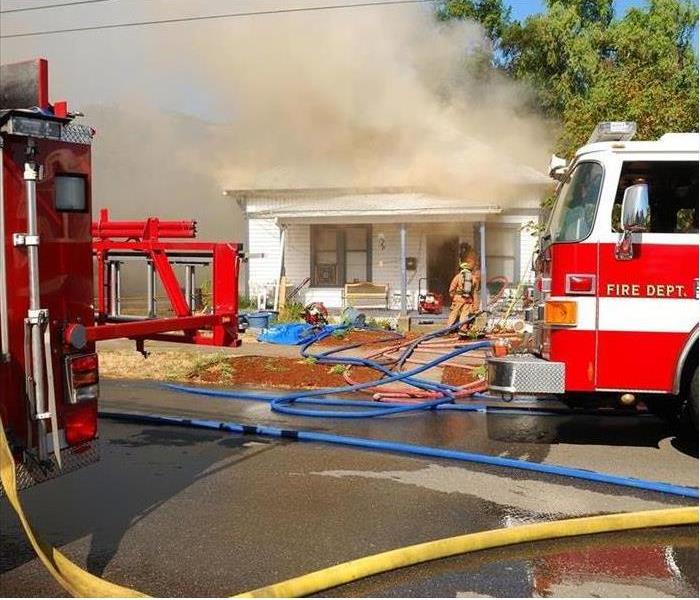Steps of the Fire Restoration Process
8/18/2023 (Permalink)
A fire in your home in West Valley City, UT, can cause a lot of damage in a short amount of time. After the flames are put out, fire restoration can begin. There are several steps to this process.
Important Tips to Start the Fire Restoration Process
- Initial Contact
Even if the fire doesn't reach all areas of your home, you still need to call fire damage mitigation specialists. They are certified to complete a thorough inspection and treat any problems they find:
- Smoke damage
- Weakened structure
- Soot residue
- Water issues
Other than your insurance provider, the cleanup team is the first call you need to make. Fast contact means that they are more likely to be able to repair the damage before any further problems occur.
- Damage Assessment
The first thing the technicians will do when they arrive is to survey the affected area. They look for weak spots and damaged materials. They then compile a list of tasks that need to be completed so that they can present you with an estimate that will be helpful in filing your insurance claim.
- Material Removal
Before any repairs can be done, the cleanup crew has to remove the parts that can't be salvaged. Drywall, insulation, flooring and ceiling materials may need to be torn out, even if they weren't directly touched by the flames. They may have water damage from the emergency efforts to subdue the fire, or the soot may be embedded deep within the porous materials.
- Surface Cleaning
The next step of the fire restoration process is cleaning all the remaining surfaces. Smoke and soot continue to erode materials the longer they are left on them, so prompt attention is the key to successful salvage. Technicians are likely to use a combination of chemicals and equipment to rid all cracks and crevices of unwanted substances and get rid of any lingering smoke smell.
- Area Drying
To prevent mold growth and other secondary damage, the mitigation team must remove all excess moisture from the affected area. The amount of water used to put out a fire makes this step one of the crucial tasks for ensuring that remediation is thorough.
- Item Repair
The structure isn't the only thing in your home that can be affected by a fire. Damage cleaning also includes determining which of your belongings must be thrown away and which ones can be restored. Before you toss items from the fire, give the mitigation team a chance to salvage them. You may be pleasantly surprised to find out how many things can be repaired.
- Fire Restoration
Finally, after everything is clean and dry, the team can rebuild the damaged parts of your home to make it livable again. They install new walls and flooring and make sure that the paint, tile and wallpaper match the remaining structures. The job isn't done until the affected area looks like there was never a fire in the first place.
No one likes the idea of a fire breaking out at home, but there's often a lot that can be done to save what's left. Once you call the fire restoration experts, they can get to work on your damaged home.





 24/7 Emergency Service
24/7 Emergency Service
